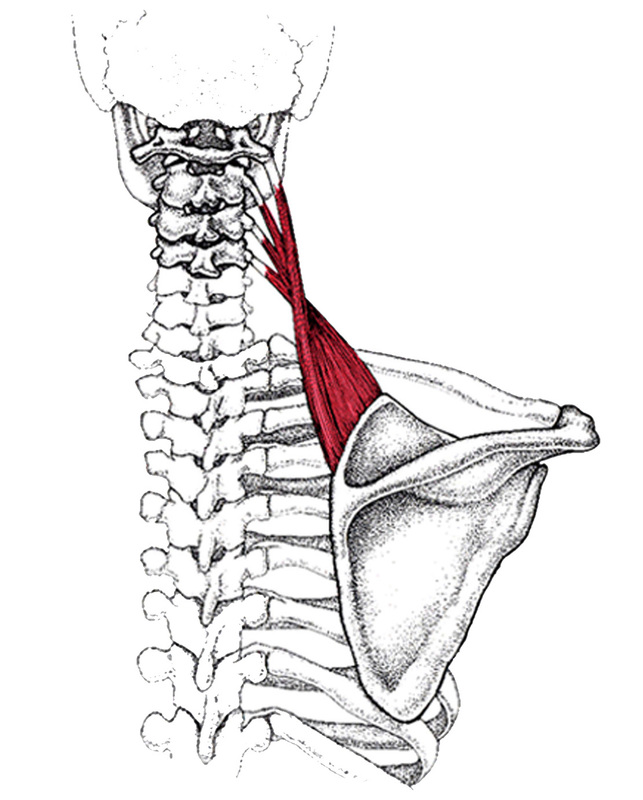 If you are reading this, you are most likely sitting at a computer. Now check in with your body, is there a bit of an ache in your upper neck or a knot at your shoulder blade that never seems to go away? Meet, Levator Scapula! This muscle is only about two fingers wide but causes worlds of pain for a lot of people. It is tucked under the Trapezius, that big diamond shaped muscle on the back. It connects to the upper portion of the shoulder blade and then separates into individual sections that attach to four of the cervical vertebrae. To make things even more interesting, there is a large group of nerves, the brachial plexus that intertwine among the muscle sections. When the muscle gets tight these nerves get pinched sending pain down the arm and into the hand. These nerves also get impinged if you are always looking down at your cell phone or read with your chin on your chest, but that involves the Scalenes which is another story… The Levator Scapula is a popular spot for tension to hang out and cause a lot of trouble. The muscle is used for several things; lifting the shoulder blade toward the ears, moving the shoulder blade down, moving the head laterally side to side, rotating the head and neck and extending the head and neck. Little kids use these muscles all the time when you ask them why they did something and they look at you and shrug while saying, “I don’t know”. When sitting at the desk and using the computer most people have a tendency to shrug the shoulders up, this tenses the Levator Scapula which contributes to that nasty knot that you feel in the upper shoulders. To decrease and help prevent problems with this little trouble maker here are some tips: - Stay hydrated. Always drink plenty of water to keep muscles working fluidly. - Put computer monitors at eye level. - When working on a laptop, make sure your chin is in neutral position. - Monitor body position through out the day, especially when under addition stress. Think of the bones stacked on top of each other and arms should hang comfortably from the sides of the body, not up next to your ears. - Try to avoid having the head turned in any one direction for too long. - Take breaks to stretch and rotate and move head, neck and shoulders throughout the day to keep muscles more relaxed and circulation moving. - GET A MASSAGE! Comments are closed.
|
Archives
January 2023
|
 RSS Feed
RSS Feed